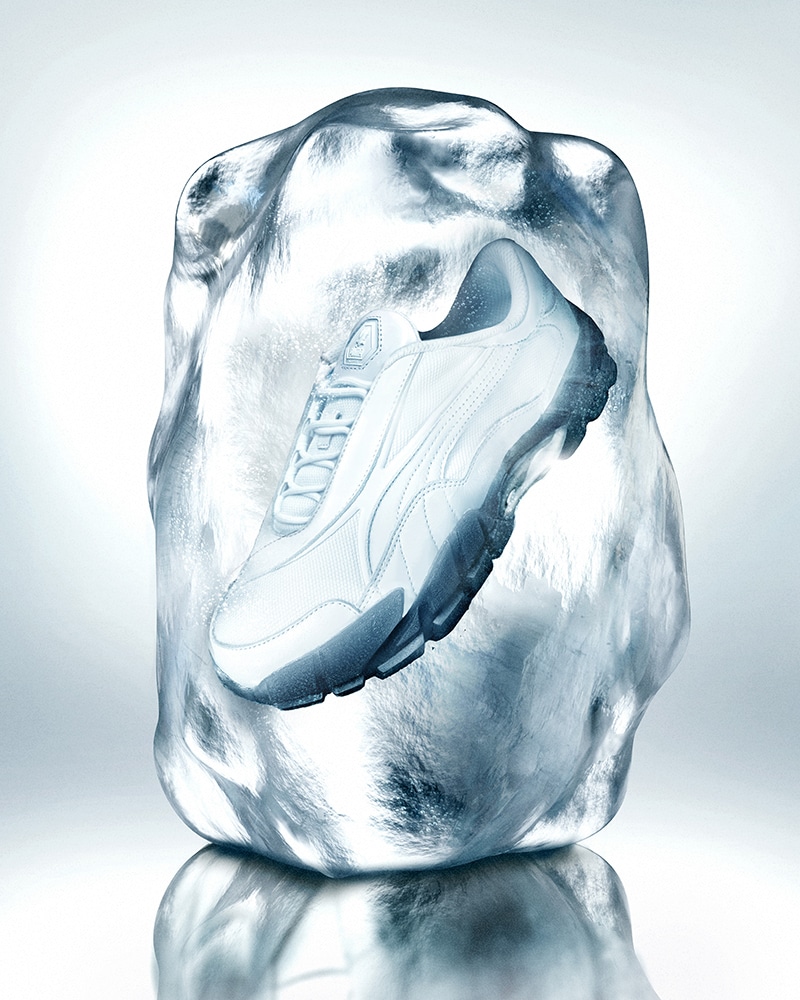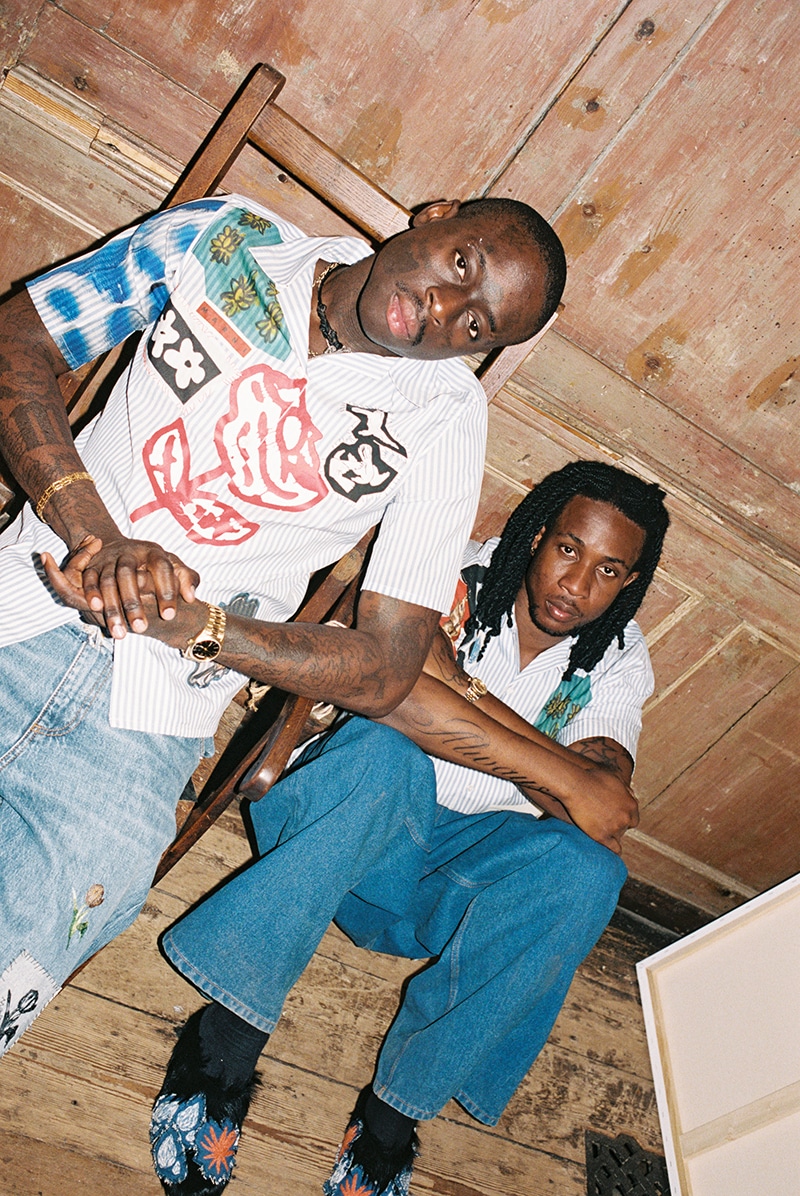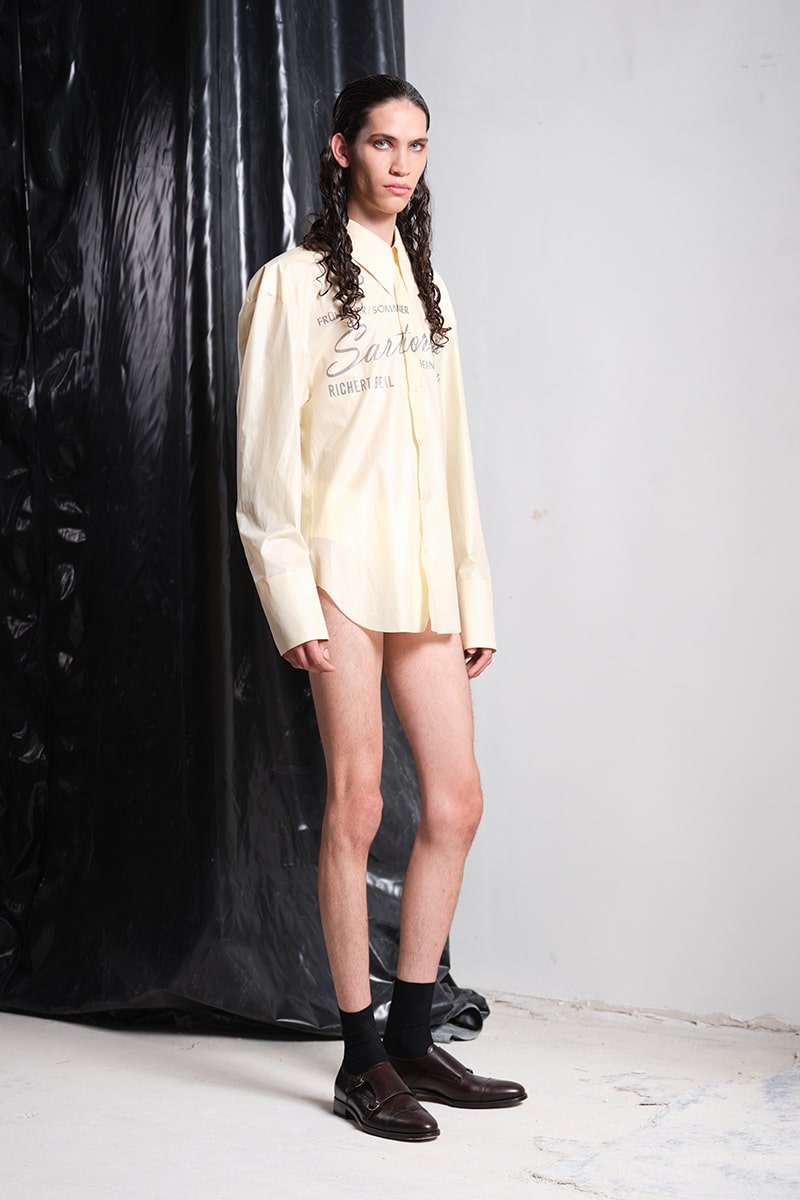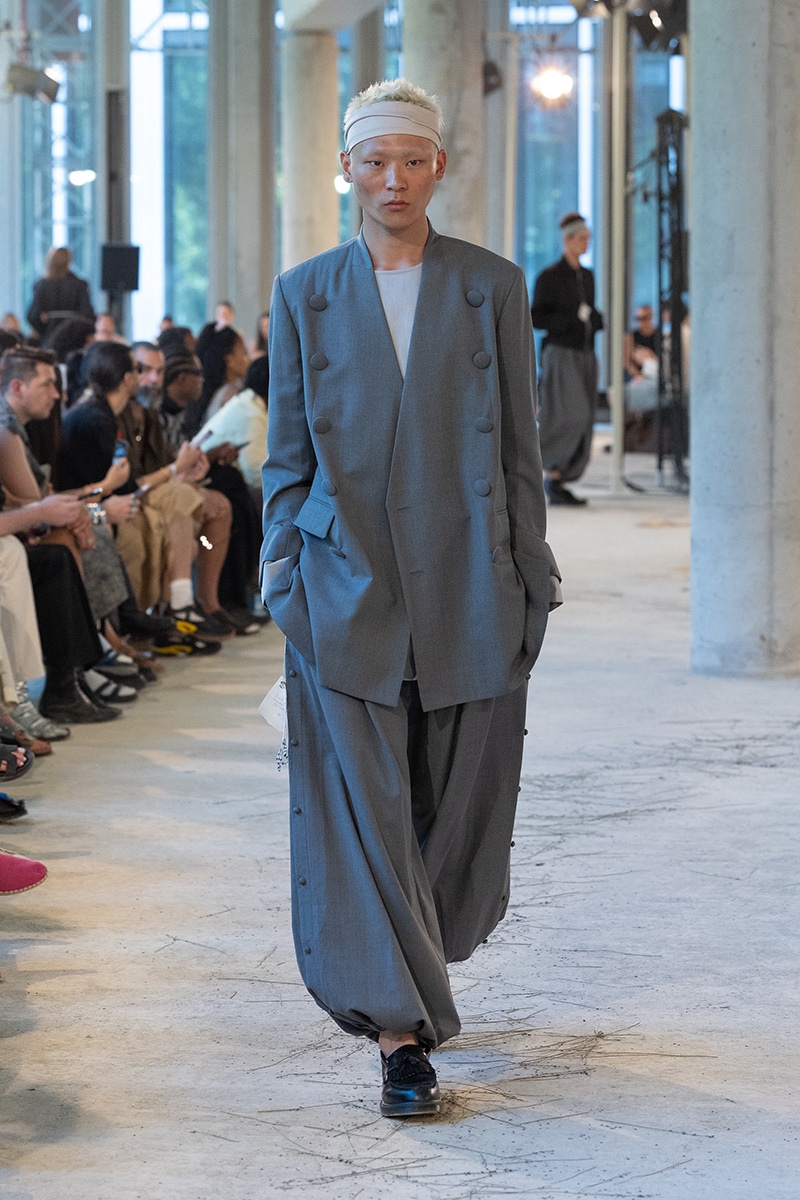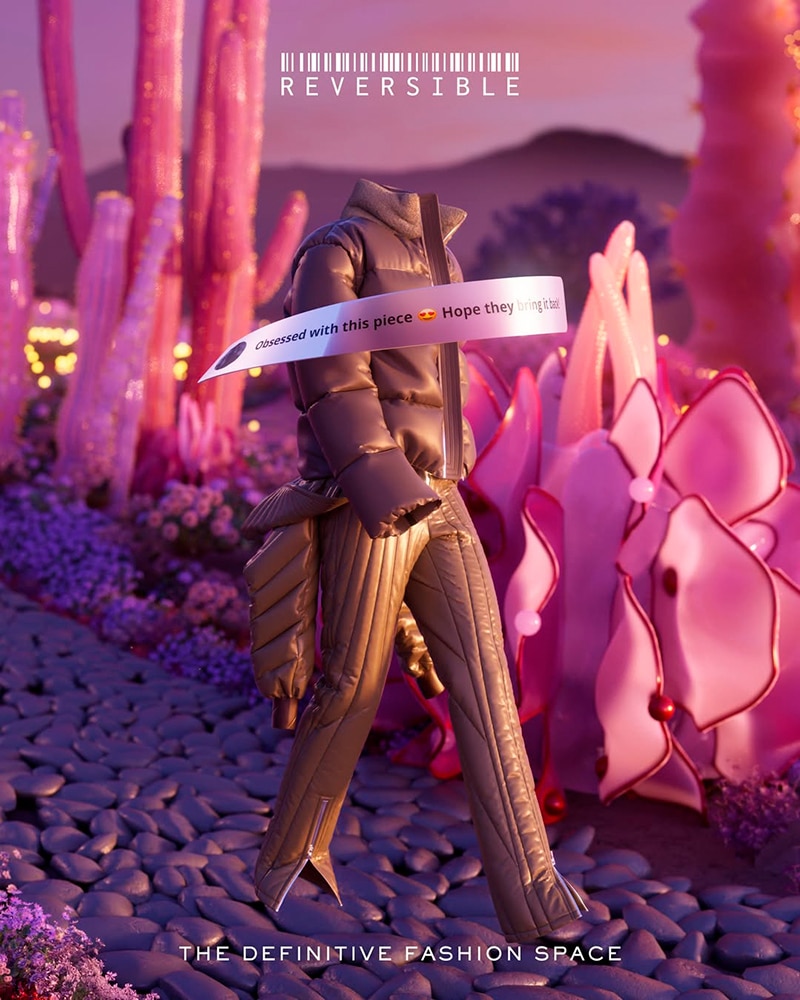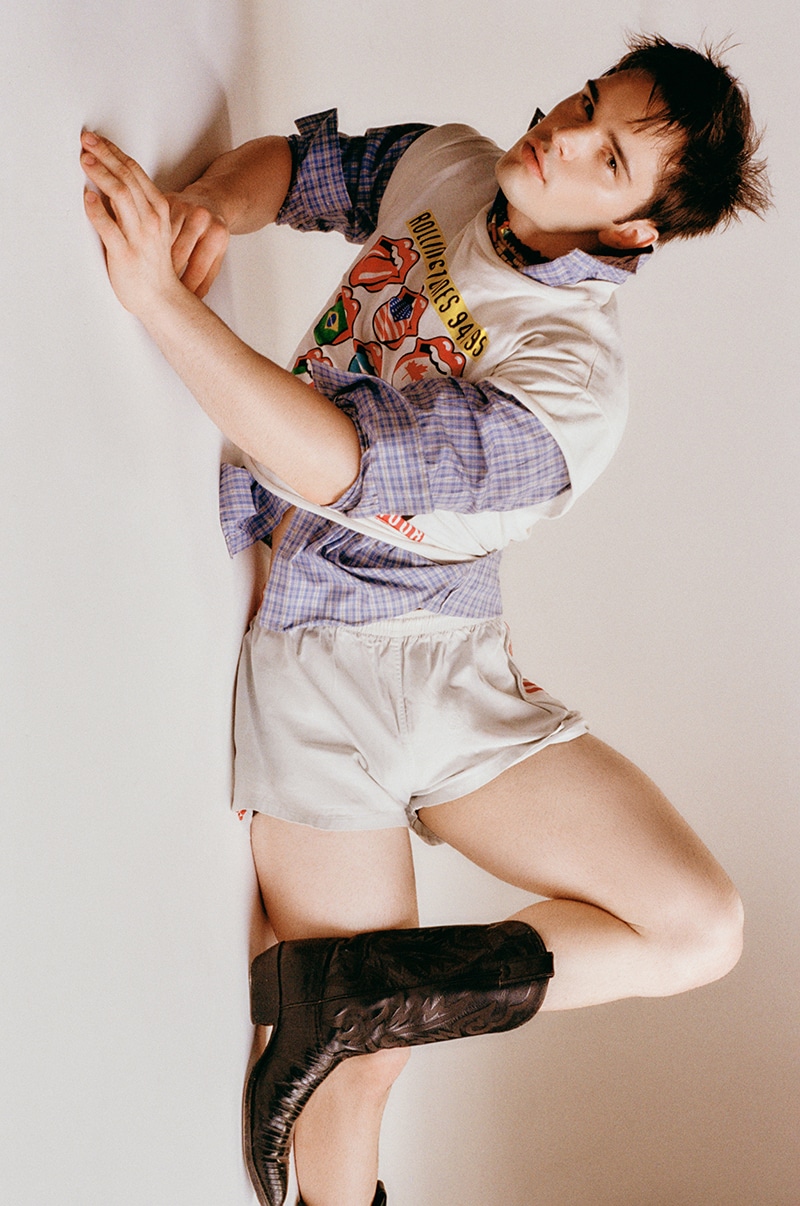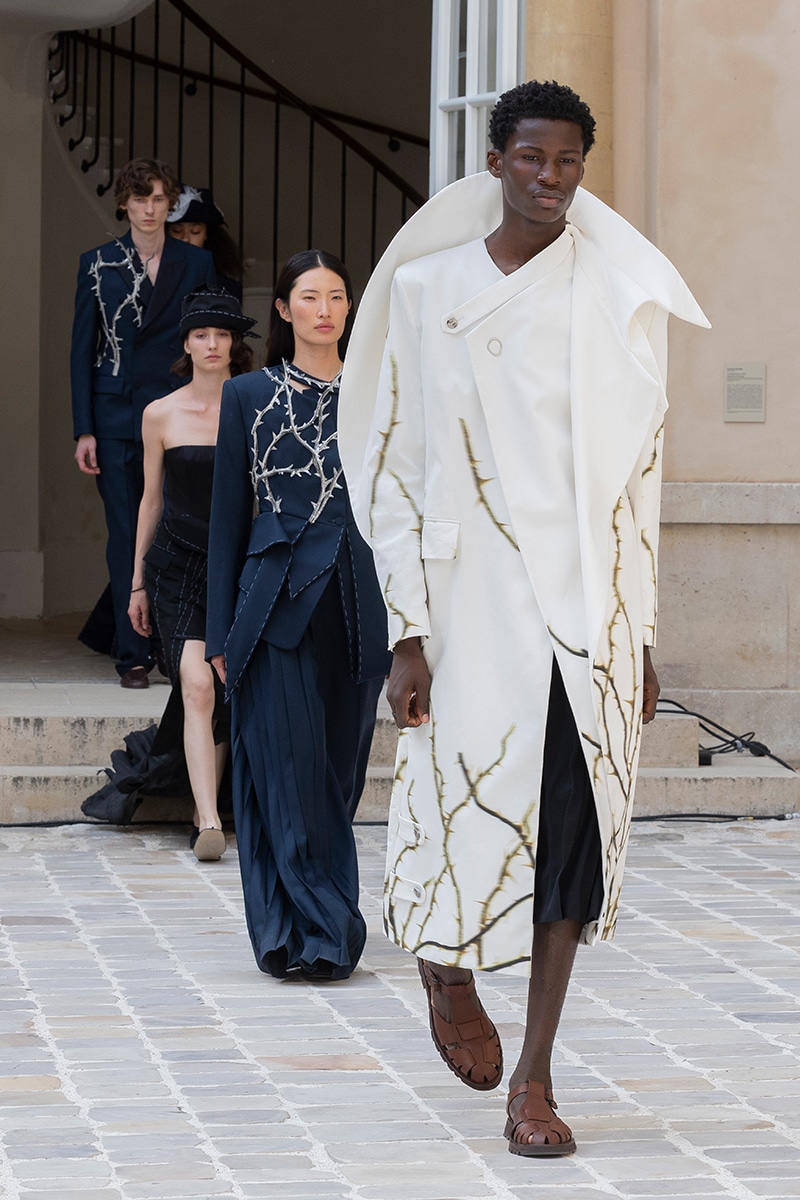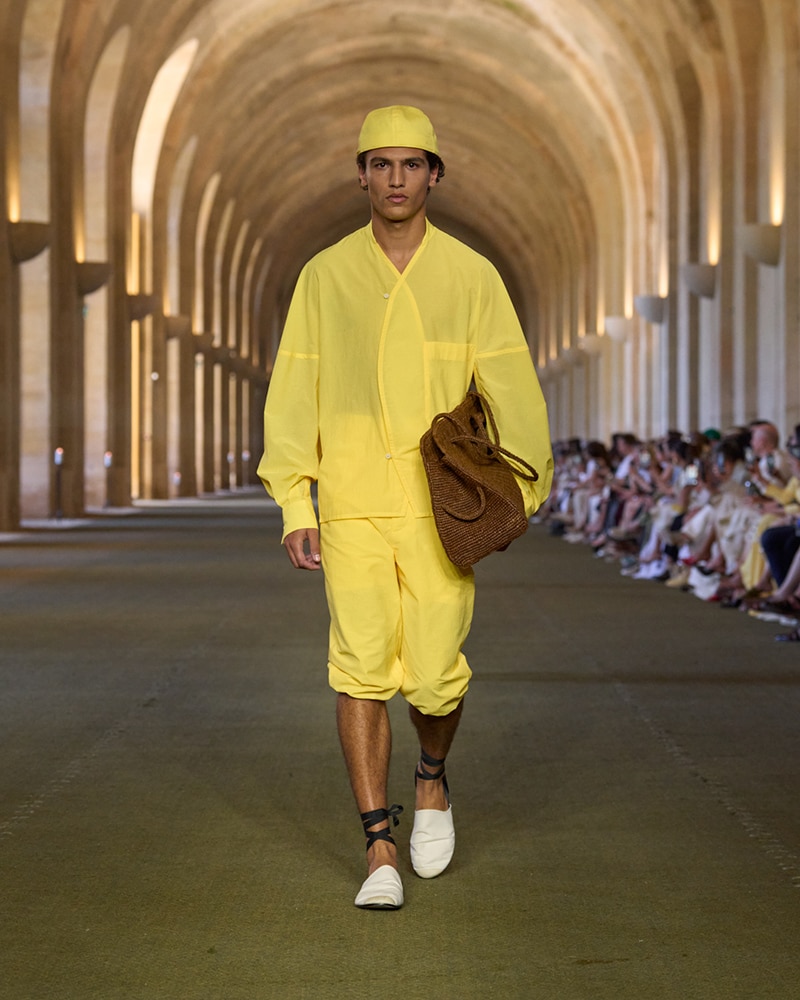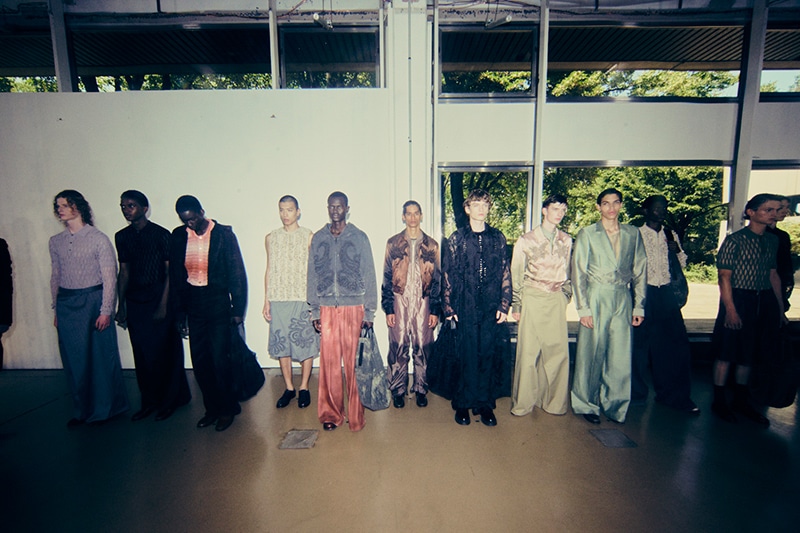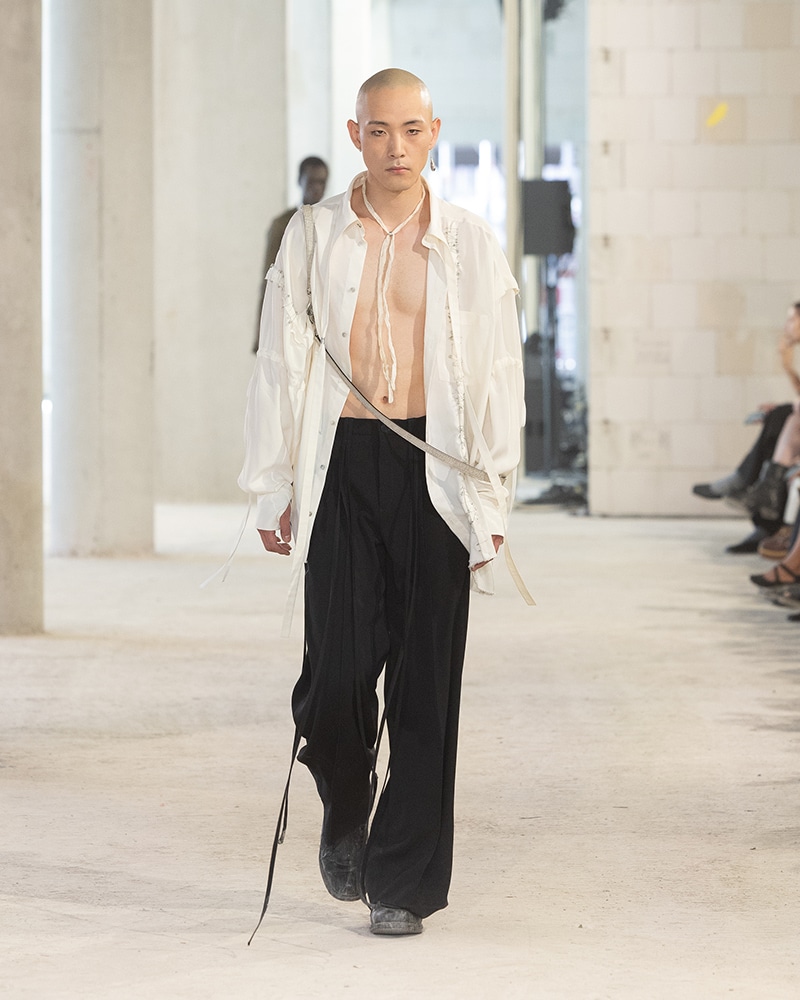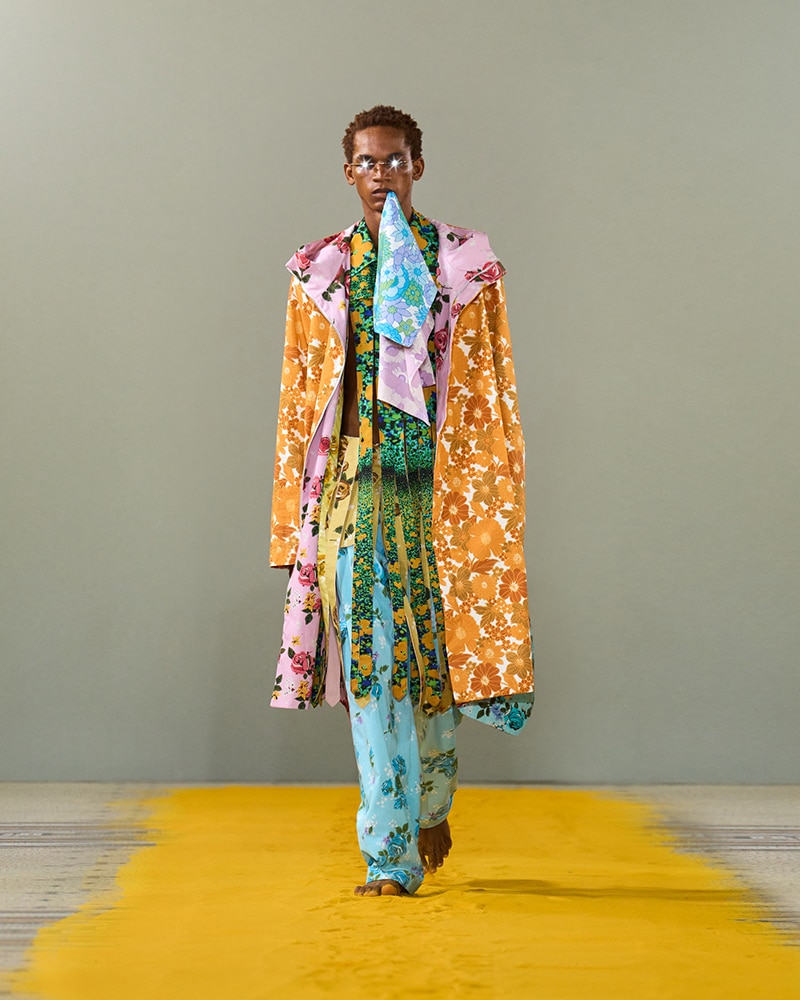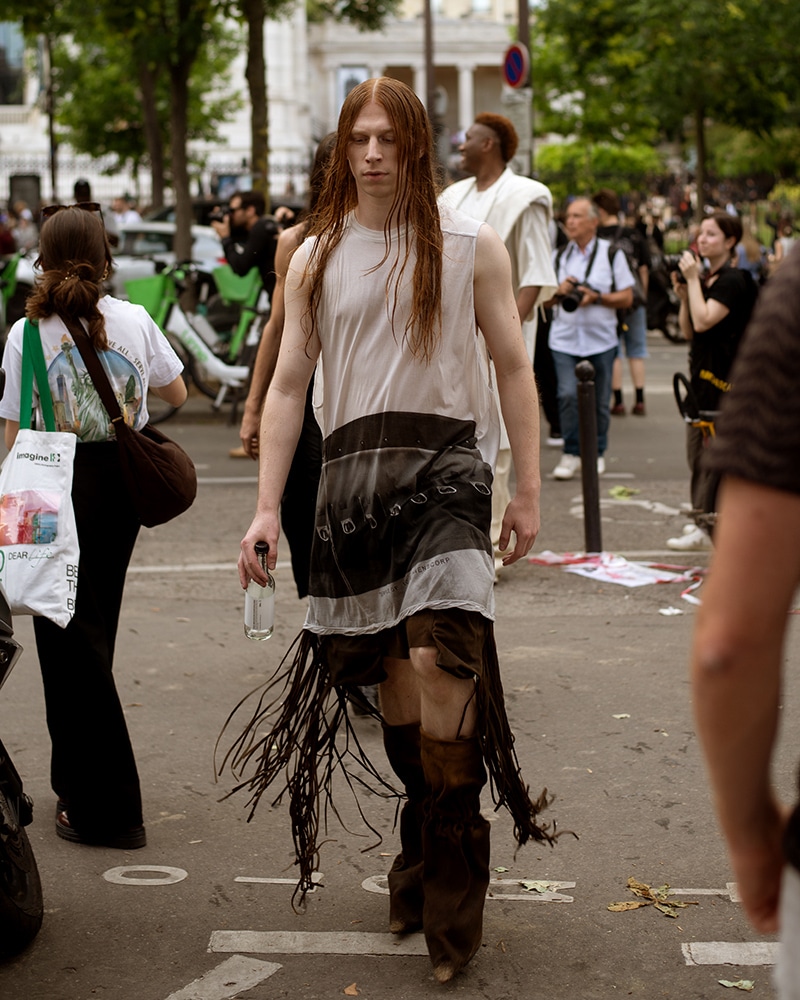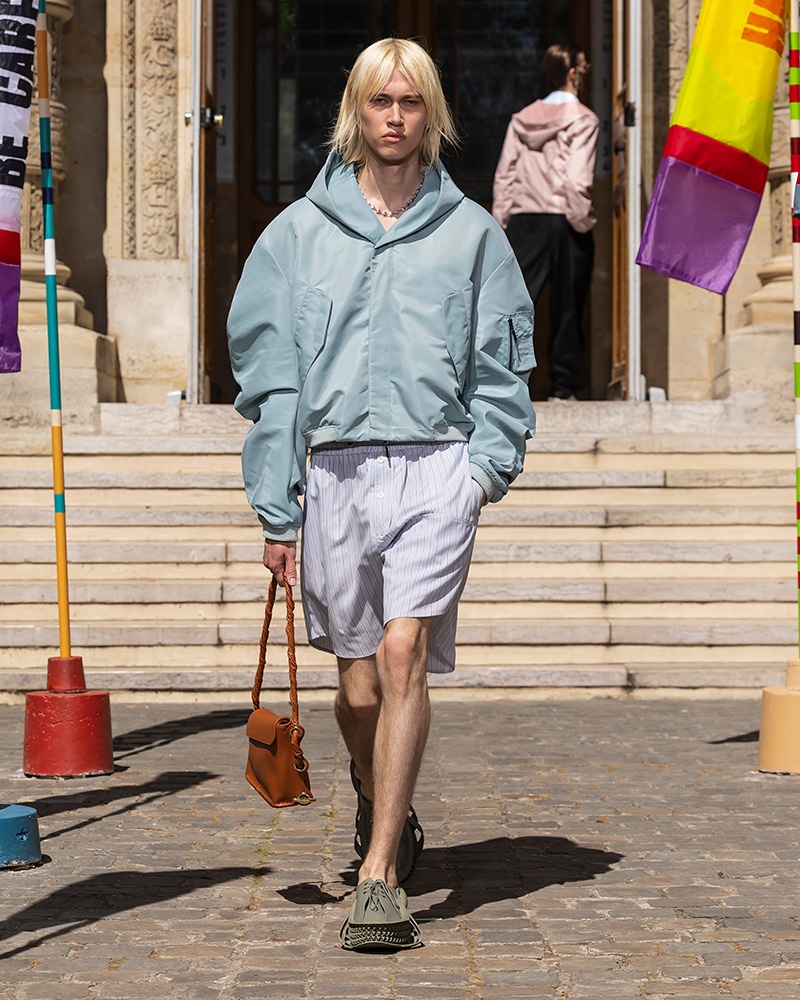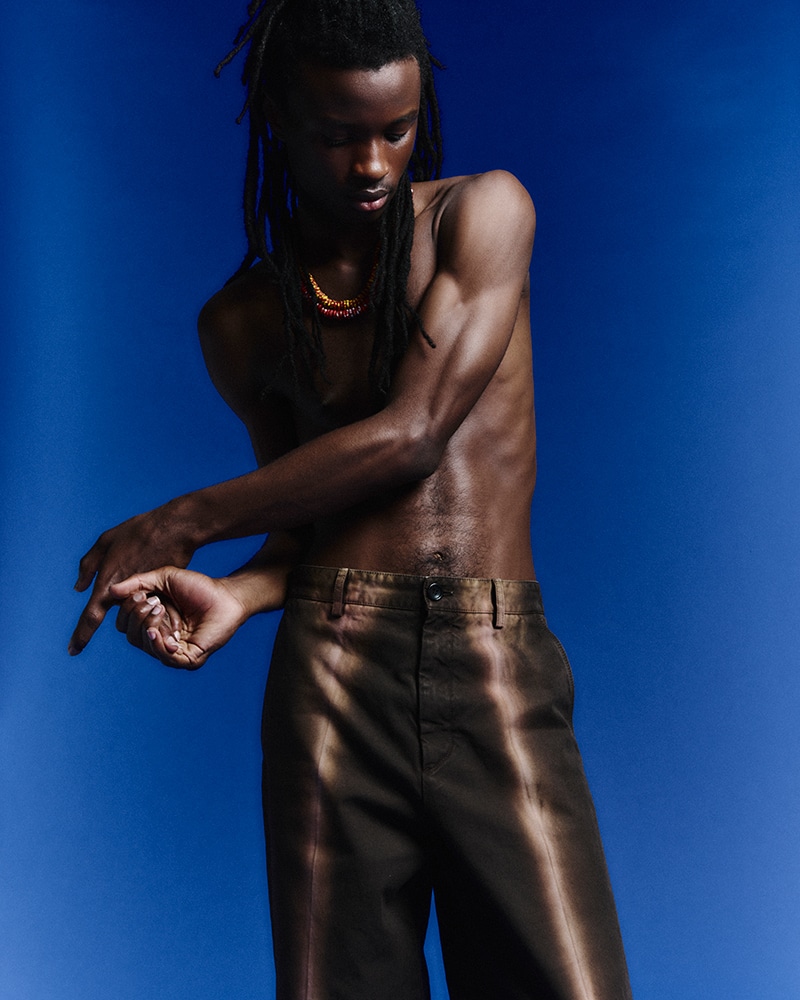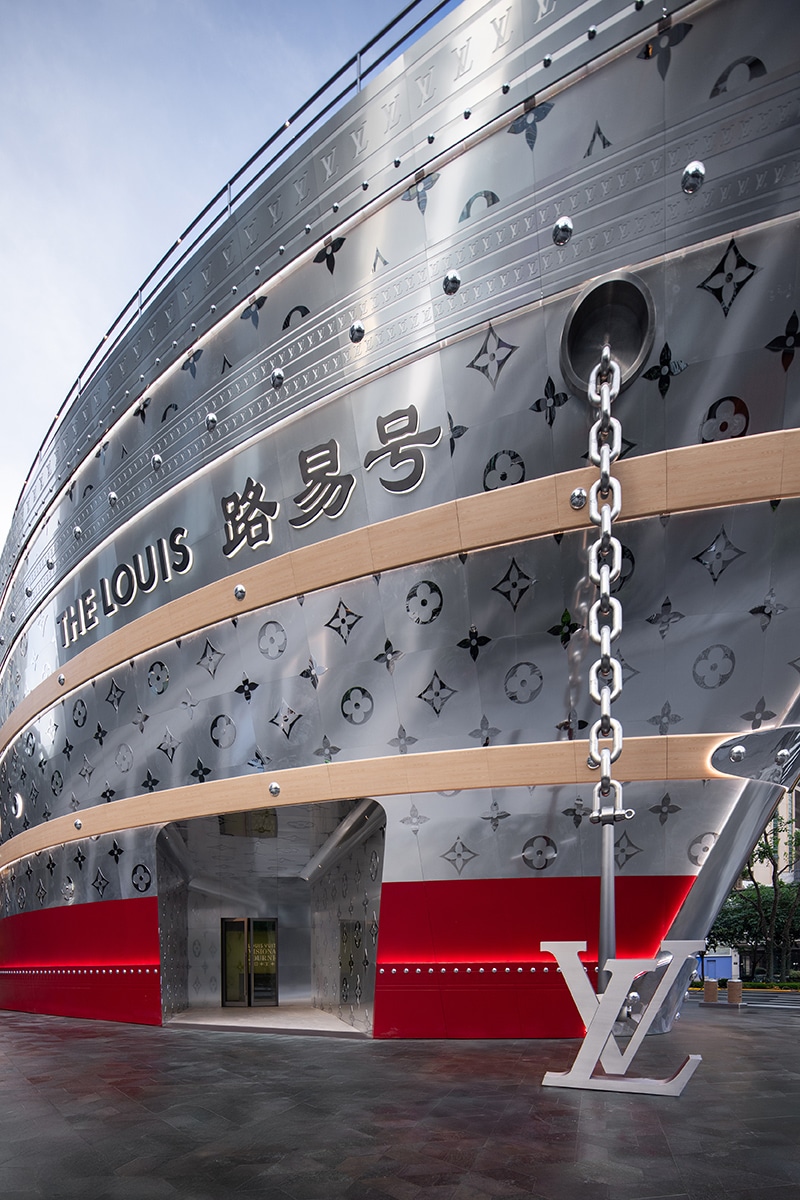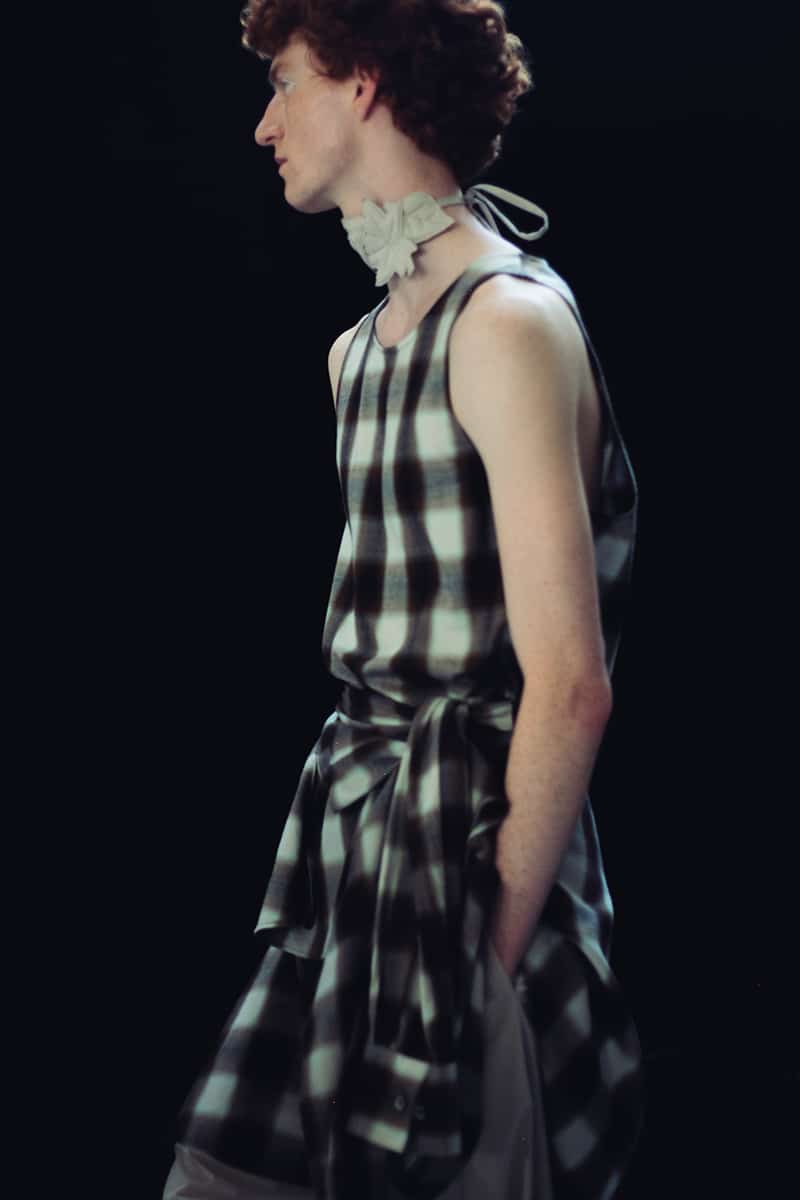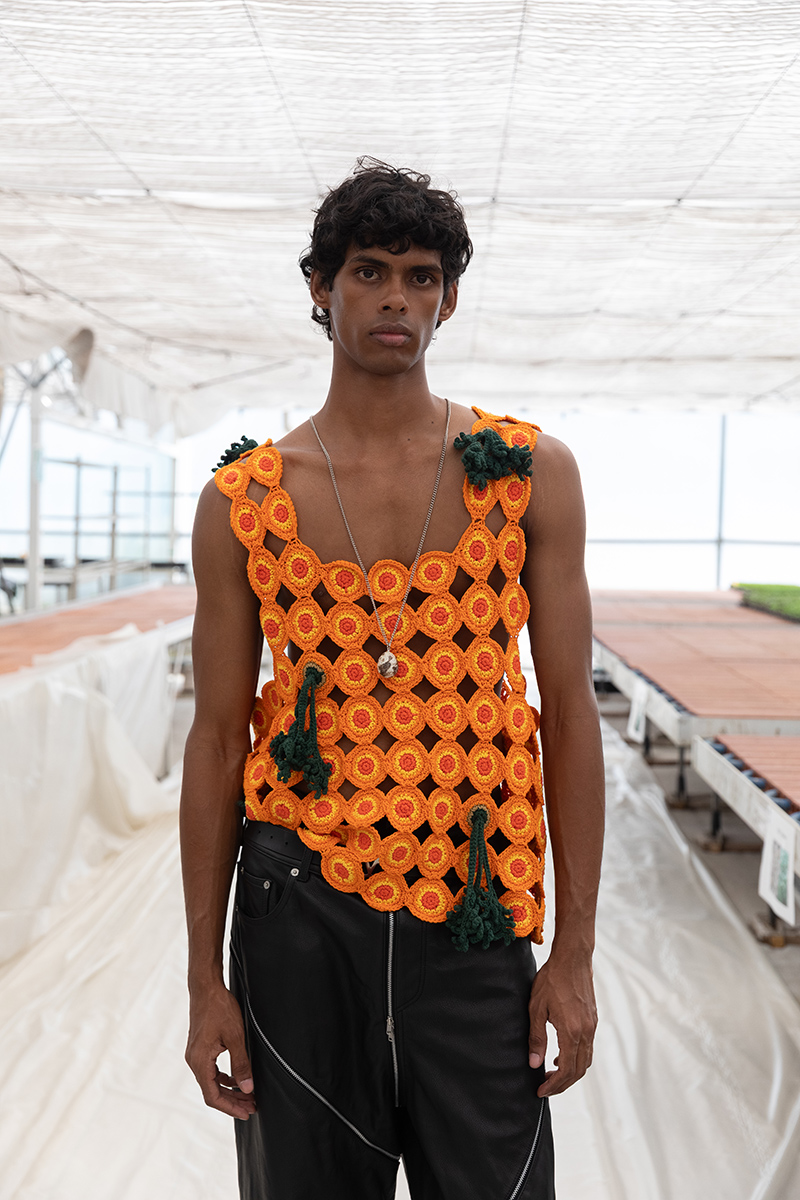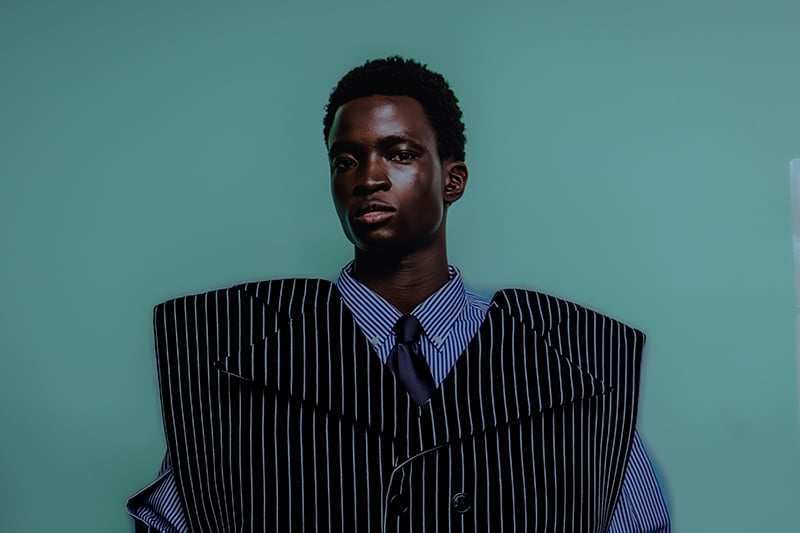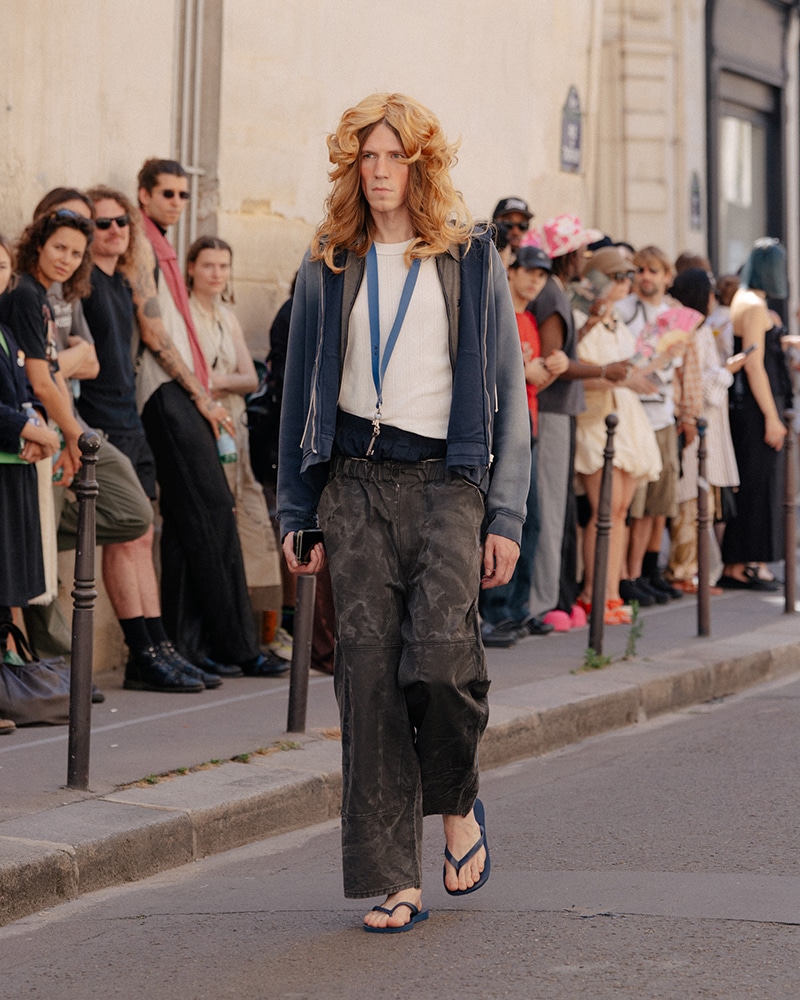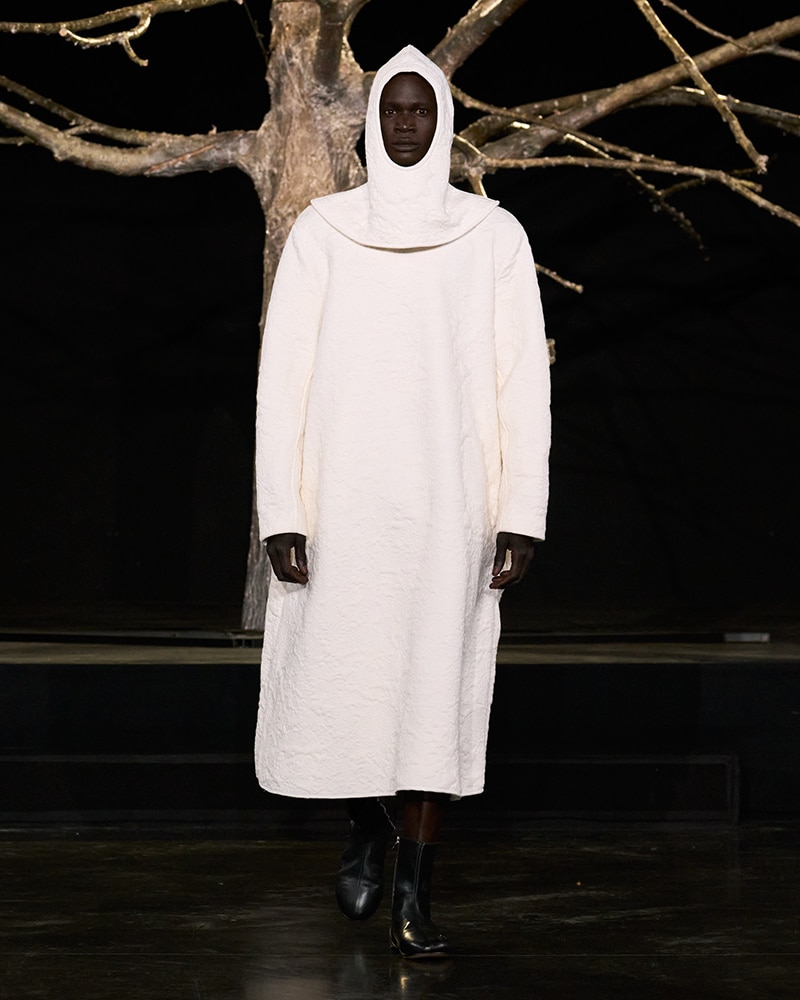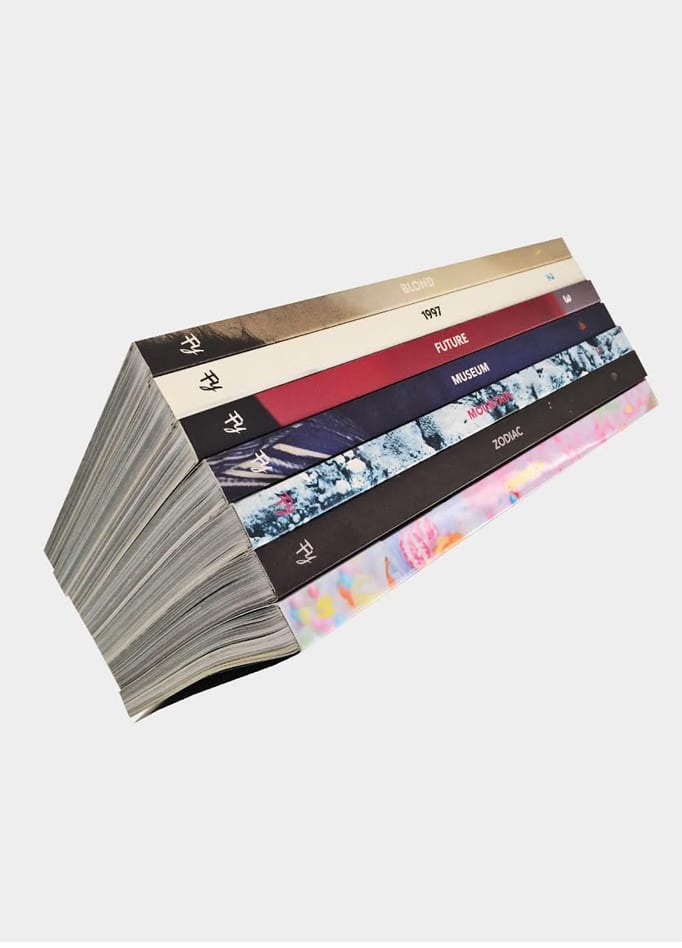
Oriol Clavell is a designer who is not afraid to challenge the norms and express his queer identity through his creations. His collection “VÍBRIA” is a testament to his vision and skills, as he combines traditional craftsmanship with cutting-edge technology, and reinterprets historical elements with contemporary details. He is currently pursuing his master’s degree at Central Saint Martins, where he hopes to further develop his style and prepare for his future career. He also has a strong sense of sustainability, diversity, and innovation, which he believes are essential for the future of fashion. Oriol Clavell is a designer to watch, as he brings a fresh and exciting perspective to the fashion industry.
We had a little chat with him before his debut at Mercedes-Benz Fashion Week Madrid and here’s what he told us:
What inspired you to create “VÍBRIA”, a collection of queer essence that fuses craftsmanship and technology?
The concept came from a night out in London with my friends. I was wearing a toile from my graduate collection when my friend told me I was the Catalan princess. The day after I woke up and these words were still on my mind. This inspired me to think about how it would be if all of a sudden, the monarchy was something queer and what it would have been like to be in a queer palace hundreds of years ago?
Víbria, the title of the collection, means female dragon in Catalan. This symbol to me has always been related to medieval tales and is a symbol of power. For me, the collection Víbria is an expression and celebration of queer strength.

How did you use 3D printing to achieve the desired aesthetic and functionality of your garments?
I think this was the main challenge in my design process. When incorporating 3D Printing, something so rigid with the drape of fabric in daily functional garments requires a lot of care and development to achieve this. As a result, I created a 3D Printed resin logos that are found in belts, bags and garments. However, one of the perks of 3D Printing is that it lets you create shapes and textures that are unachievable with just fabrics. I like to play with that! For that, I have created some showpieces that are purely designed for the show, like the silver-coated hand accessories and the silver-coated corset top.
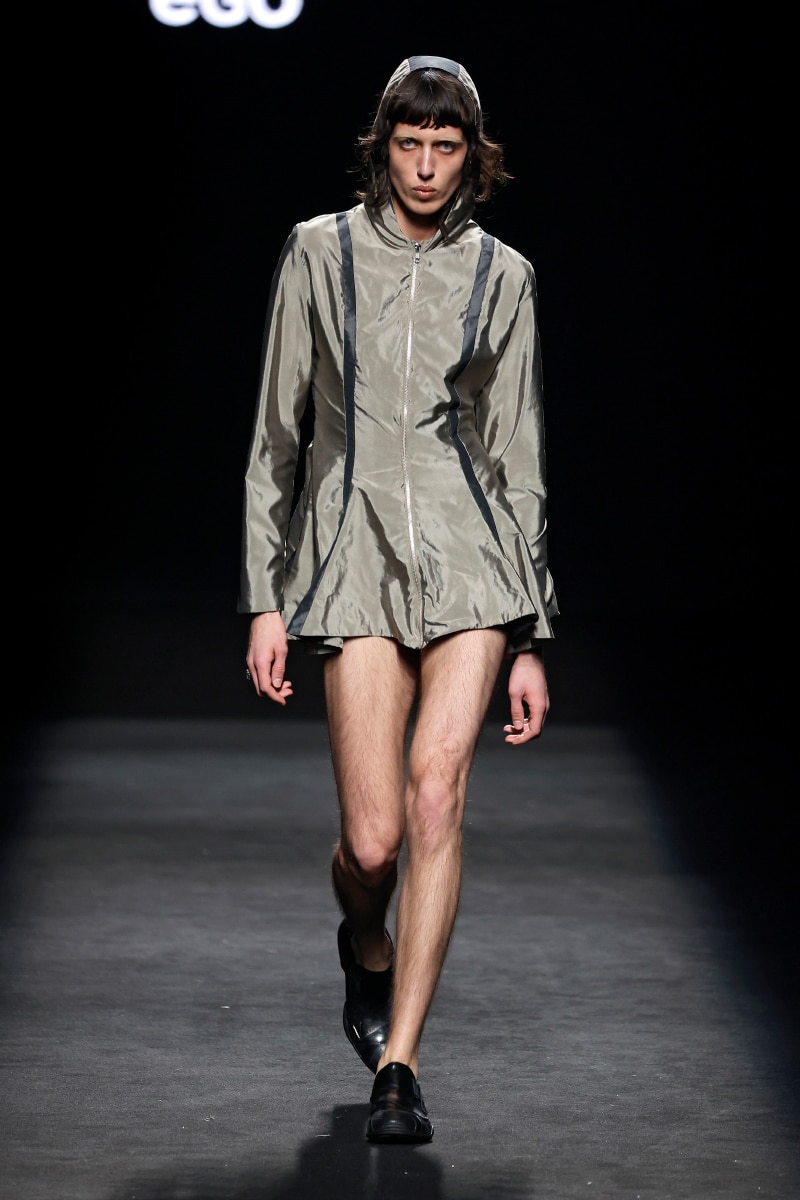
How do you imagine a palace from a queer lens, and what historical elements did you reinterpret with contemporary details?
I imagine that everything would be shifted around, the dynamics of power would be so much different, self-expression would be at its purest and we would have fun! In a way, it’s my “locus amoenus”, a perfect safe space where everything would be ideal.
An example of historical garments that are reinterpreted in the collection are the corsets. However, there isn’t a single proper corset in the collection, but there are garments that remind us of corsets and that are reinterpreted by them; like the 3D-printed sculptured corset or the corset bomber. In the last case, instead of having a restrictive function as corsets used to have, it has a more relaxed and comfier fit. We keep the symbology of it, but we adapt it to our needs.
What was your experience of studying at London College of Fashion and how did it shape your vision and skills as a designer?
It was great! I think the experience of studying at a university like the London College of Fashion depends on how much you want to be involved in it, as there’s a lot of independent study. I think I took the most of it by being in the studios in my free time when I was not working, and I believe this helped me a lot with my work ethos.
One of the best things about the university is the cultural exchange that is found in every class, I think by being in a place where everyone has different cultural experiences helped me embrace mine and, because of that, base my work on them.

How do you balance your own creative identity with the expectations and feedback of the press and the artists you dress?
I think it’s natural for a designer to take onboard the opinions of the press and the market and to feel the pressures to perform. As long as you have a perspective on this, it’s good to know what people think about your work. However, it’s fundamental to detach yourself from these opinions to ensure your work is truly yours and lets you communicate whatever you want to communicate. As an emerging designer, I love the opportunity to work with other artists as it allows me to explore my creative identity in new ways.

What are your goals and aspirations as a designer, and what are the next steps for your career?
At the moment I am undertaking a master’s in Fashion at Central Saint Martins, which I started a few months ago. After showing in Mercedes-Benz Fashion Week Madrid Allianz-EGO, I want to focus on it and start working on my master’s collection that will come out in a year. Hopefully, this will be alongside working on some commissions. On a longer future perspective, I would like to have my own label that I can make a living from it.
How do you see the future of fashion in terms of sustainability, diversity, and innovation?
Personally, I think that all of these terms need to be included in every fashion project that we do, and I think that the new generations are aware of it.
In every project that I’m involved in, I try to improve every aspect of it. For example, I really like using leather as it lets me achieve shape creatively and for this collection, I was thinking how I could use leather in a more sustainable way. After contacting a leather factory from my hometown, I’m being sponsored to use their deadstock leathers to reduce their waste while creating new garments.








